

Max Davies
How Audi, BMW, Honda, Mercedes-Benz, and Suzuki started out in Australia, and where they are now
14 Hours Ago
In honour of the SSC Tuatara's record-breaking speed run, we take a look back at the world's fastest production cars of decades past.

Marketplace Editor


Marketplace Editor
These days the title of “world’s fastest car” doesn’t quite have the same ring to it as it once did – now, it’s all about being the fastest around Germany’s Nurburgring Nordschleife race track.
But this week the SSC Tuatara snatched the crown from the Bugatti Chiron Super Sport, smashing the previous benchmark of 490.484 km/h (304.773 mph) set in 2019 with an eye-watering top whack of 532.6km/h – though the verified two-way average for its speed runs stands at a still-impressive 508.6km/h.
Now that the industry has finally broken the 500km/h barrier for production cars, let’s take a look back at the record holders for ‘world’s fastest production car’ from a time when breaking 300km/h was the benchmark.

The 288 GTO was produced from 1984 to 1986, with ‘GT’ standing for ‘Gran Turismo’ and ‘O’ standing for ‘Omologato’ – the Italian word for homologation.
Based on the mid-engined 308 GTB, the Ferrari 288 GTO was a racing homologation special to allow the Prancing Horse to compete in the Group B Race series in the 1980s, which required 200 road cars to be built.
Power in the 288 GTO came from a mid-mounted 2.8-litre twin-turbocharged V8 developing 298kW and 496Nm, which had been de-bored from the 3.0-litre V8 in the 308 GTB to meet the FIA’s requirement for a turbocharged engine’s capacity to be a multiple of 1.4.
In terms of performance figures, the 288 GTO could sprint from 0-60mph (0-97km/h) in the “upper four-second range” and 0-125mph (0-201km/h) in 15 seconds dead. The 288 GTO’s top speed was 304km/h (189mph), making it the first road-legal production car to break the 300km/h barrier. Legendary.
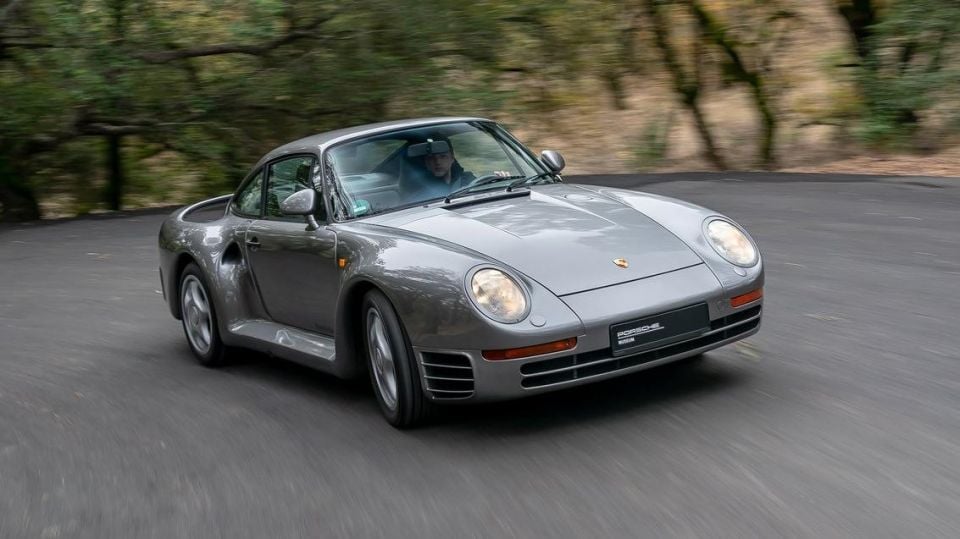
Like the Ferrari 288 GTO, the Porsche 959 of the 1980s was born from a Group B racing homologation program.
The 959 was produced between 1986 and 1989, and started life as a Group B rally car before becoming the fastest road-legal production car of the time, and was also hailed as one of the most technologically advanced sports cars ever thanks to its trick auto-levelling suspension system and torque-vectoring all-wheel drive.
Power in the 959 came from a 2.85-litre twin-turbocharged horizontally opposed six-cylinder ‘boxer’ engine with water-cooled cylinder heads and an air-cooled block. Outputs were rated at 331kW and 500Nm, with drive channelled to all four wheels – one of the first high-performance vehicles to do so – via a very special manual transmission with five forward gears and a ‘G’ off-road gear.
All that grunt and all-paw traction meant the Porsche 959 could accelerate from 0-100km/h in just 3.7 seconds, 0-200km/h in 13.0 seconds, and hit a top whack of 317km/h (197mph).
The 959 was very influential for Porsche, providing the basis of the first all-wheel drive 911 Carrera 4 sports car, as well as 911 Turbo models from the 993-generation onwards.
In addition to the road car and Group B rally car, the 959 was developed into a Group B race car (for the same series as the 288 GTO which was subsequently canned) in the form of the Porsche 961 which only ran a handful of races.

A car that needs little (or no) introduction, the Ferrari F40 was a direct successor to the 288 GTO and continued its forebear’s mid-engine, rear-wheel drive layout. It was the last car to be commissioned by Enzo Ferrari before his passing.
The F40 was powered by a 2.9-litre version of the GTO’s twin-turbo V8, tuned to deliver 352kW.
With its increased power and lightweight chassis, the F40 became the world’s fastest street-legal car as well as the fastest and most expensive Ferrari ever.
Zero to 100km/h was dispatched in 3.8 seconds, and 0-200km/h in 11 seconds – giving it an edge over its arch-rival in the Porsche 959. The F40 could also hit a top speed of 324km/h (201mph), making the fastest production road car at the time and the first to crack 200mph (322km/h).
Originally, just 400 examples of the F40 were to be produced for the company’s 40th anniversary, though 1315 units ended up being produced between 1987 and 1992.
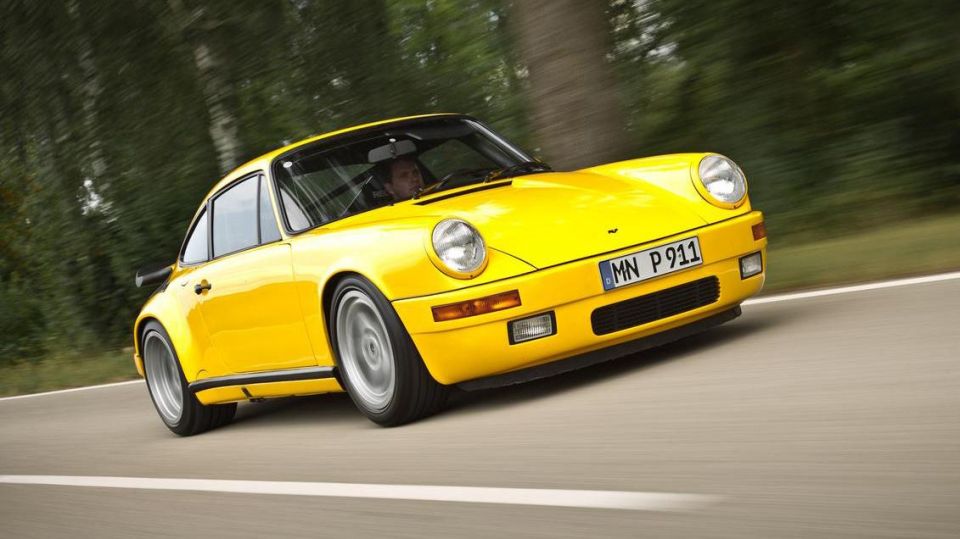
The F40’s time at the top was very short-lived, with German tuning house Ruf snatching the ‘world’s fastest production car title’ in the same year with the CTR ‘Yellowbird’.
Ruf is a Porsche tuning specialist that has long manufactured modified 911s, and the CTR Yellowbird is no different.
Power came from a modified version of the 911’s 3.2-litre flat six, enlarged to 3.4 litres and with two turbochargers strapped on. Ruf quoted outputs of 345kW (though dyno readings consistently saw higher figures) and 553Nm.
The rear-engined, rear-wheel drive CTR teamed its beefed-up engine to a standard five-speed manual, accelerating from 0-60mph (0-97km/h) in 3.65 seconds on its way to a top speed of 340km/h (211mph).
In addition to the manic drivetrain, the CTR Yellowbird featured a range of modifications over the 911 Carrera on which it was based, including fibreglass front and rear bumpers, enlarged rear arches, Speedline wheels, and intake ducts on the rear flares.
The CTR also received an integrated roll cage, upgraded suspension and brakes, with 29 vehicles built from scratch and a further 20-something being conversions of customer cars.

The XJ220 was developed in collaboration with Tom Walkinshaw Racing, produced between 1992 and 1994.
First shown in 1988 as a concept car, the Jaguar XJ220 was hotly anticipated as it promised a V12 engine and all-wheel drive as well as scissor-style doors.
However, issues homologating the concept’s 6.2-litre V12 to emissions regulations saw the production model instead draw upon a 3.5-litre twin-turbocharged V6 mated to a five-speed manual gearbox, while all-wheel drive was dropped in favour of a lightweight rear-drive layout. The cool doors also didn’t make the cut.
Despite the disappointing omissions from concept to production, the XJ220 still produced an impressive 404kW and 645Nm from its blown V6, while tipping the scales at 1470 kilograms – making it more powerful and lighter than the V12 all-wheel drive prototype.
The XJ220 claimed a top speed of 350km/h (verified at 349.4km/h) – giving it the title of fastest production car – and it could accelerate from 0-60mph (0-97km/h) in a claimed 3.6 seconds.
In addition to its straight-line speed credentials, an XJ220 pre-production prototype set a 7 minute 46.4 second lap around the famed Nurburgring race track in 1991, which wasn’t broken for a number of years. However, the prototype wasn’t road-legal and the lap time wasn’t independently verified.
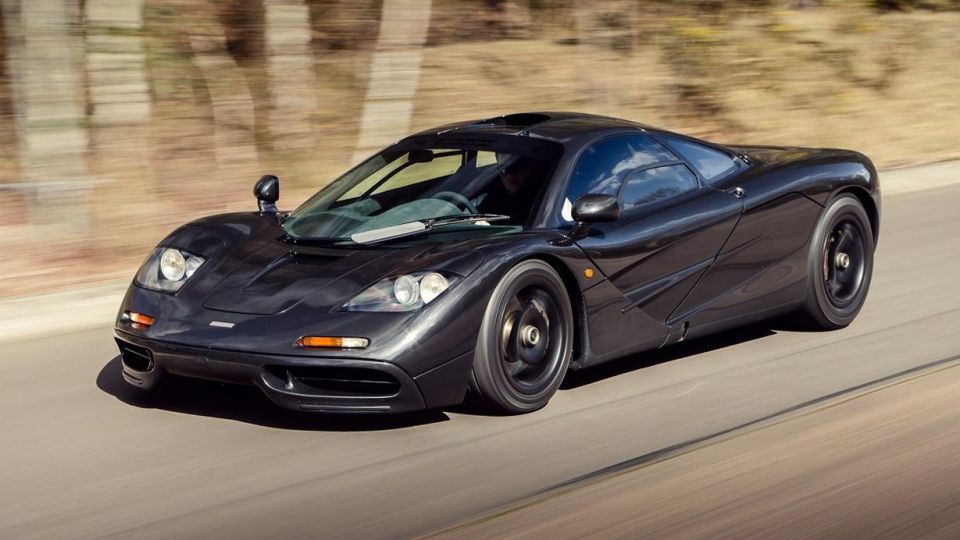
Quite possibly one of if not the most iconic supercar in history, the McLaren F1 stole the fastest production car title when it arrived in 1993 with a claimed top speed of 370km/h.
The F1 then raised the stakes again on March 31, 1998, where it set a new record of 386.4km/h after removing the 7500rpm rev-limiter, cementing itself as the Guinness World Record holder for fastest production car.
Power in the McLaren F1 came from a BMW-sourced 6.1-litre (6064cc) naturally-aspirated V12 pumping out 458kW of power and 651Nm of torque. The F1 was rear-wheel drive with a six-speed manual transmission.
Zero to 60mph (97km/h) took 3.2 seconds, and 0-200km/h was dispatched in under 10 seconds. Manic.
While the McLaren F1 has been succeeded by a handful of vehicles with higher top speeds, to this day it remains the fastest naturally-aspirated production car ever made.
Designed by Gordon Murray, the McLaren F1 employed a unique three-seat cabin layout placing the driver in the centre, and drew upon numerous high-end materials for its lightweight construction including carbon-fibre, gold, titanium, magnesium and kevlar.
The F1 was designed to be the ‘ultimate road car’ and despite its blistering performance, it was pitched as comfortable and safe for everyday use – something most supercars of the time weren’t.
It was also one of the most expensive cars ever at the time, retailing for almost US$1 million in the 1990s for the ‘standard’ road car – the race-inspired LM, long-tailed GT and track-only GTR were even more expensive.
At the end of its life in 1998, McLaren had produced 106 units in total: 64 street versions, 5 LMs, 3 GTs, 5 prototypes (XP), 28 GTR race cars, and 1 LM prototype (XP LM).

It took nearly a decade for the McLaren F1 to be toppled from the production car pedestal, but Swedish upstart Koenigsegg burst onto the scene in 2005 with the CCR.
Powered by a Ford-sourced 4.7-litre supercharged V8 making 601kW and 920Nm, the CCR’s outputs are nothing short of wild even by 2020 standards.
The company claimed a top speed of over 385km/h, and then stamped its authority with a verified run of 387.87km/h on February 28, 2005, at the Nardo Prototipo proving ground in Italy – handing it the title of world’s fastest production car.
Koenigsegg claimed the CCR could sprint from 0-100km/h in just 3.2 seconds, and complete the standing quarter-mile in 9.0 seconds dead.
While an incredible feat, Koenigsegg’s record was short-lived, with Bugatti snatching the title shortly after.
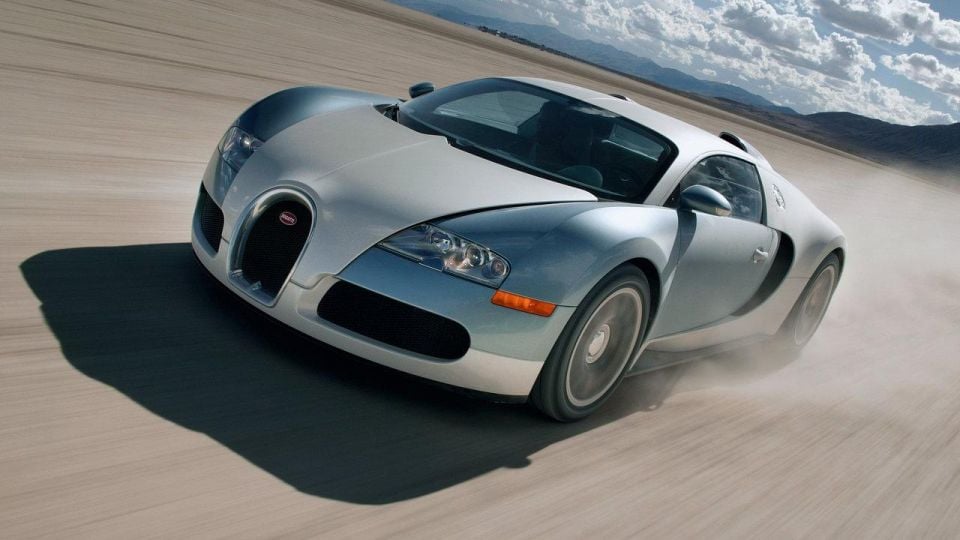
Almost a decade since the EB110 under previous owners, the newly Volkswagen-backed Bugatti stormed back onto the supercar scene with what would become the fastest car in the world – the Veyron 16.4.
Previewed in various concept forms since the late-1990s, the Veyron was unlike anything else the world had ever seen, combining elegant design with space-age, state-of-the-art technology and one of the most powerful engines ever fitted to a production vehicle.
The mid-mounted, 8.0-litre W16 sported no less than four turbochargers. Like the 6.0-litre W12 used by Bentley – which is essentially two 3.0-litre V6 engines bolted together – the Veyron’s quad-turbo 8.0-litre is the merging of two narrow-angle 4.0-litre V8 engines.
Outputs are rated at an eye-watering 736kW(1001hp) and 1250Nm. Helping cool the massive engine and the Veyron’s array of other components are no fewer than 10 radiators, while drive is channelled to all four wheels through a seven-speed dual-clutch automatic transmission.
Just months after the Koenigsegg CCR set its production car record, Bugatti recorded a top speed of 408.47km/h (253.8km/h) at Volkswagen’s Ehra-Lessien test track on 19 April 2005.
For an owner to achieve such a speed, the vehicle needs to be toggled into its top-speed mode using a special key, which retracts the rear spoiler (which also acts as an air brake), shuts the front diffusers and lowers the ride height for optimal aerodynamics and minimal drag.
Several iterations of the Veyron were released following the original 16.4, increasing the power outputs and top speed along the way. The final version, the Veyron Super Sport, would later reclaim the title of ‘world’s fastest production car’ from Shelby Super Cars (SSC) half a decade later.
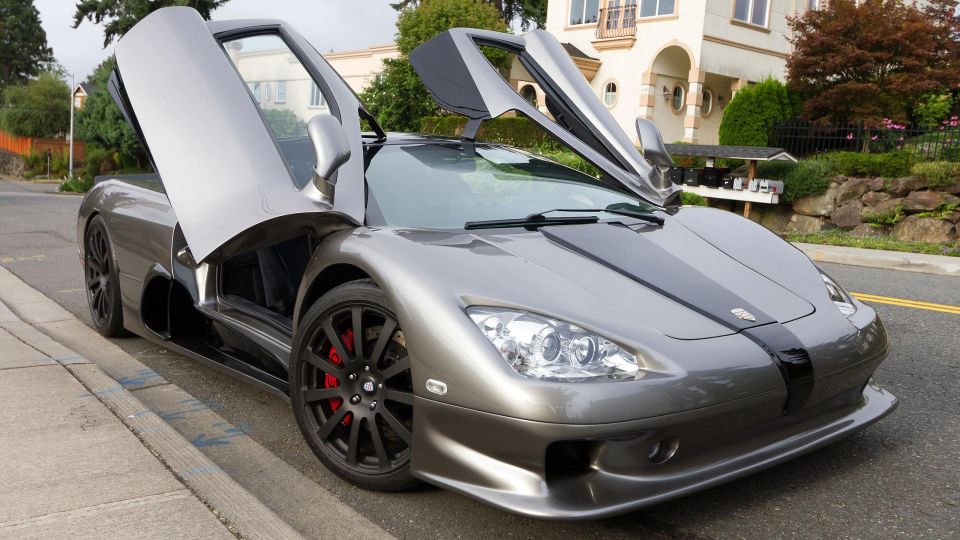
Before the Tuatara there was the Shelby SuperCars Ultimate Aero TT. Shelby SuperCars North America, or SSC, was founded in 1998 by Jerod Shelby – no relation to iconic automotive figure Caroll Shelby.
The Ultimate Aero TT was a development of the SSC Ultimate Aero, which was first released in 2004. Initially, the SSC Aero featured a 6.2-litre supercharged V8 from the Chevrolet Corvette, making a healthy 580kW and 860Nm.
Subsequent upgrades saw the introduction of the ‘TT’ version in 2007, swapping out the supercharger for two turbos which saw the 6.2-litre V8 crank out a monster 880kW and 1500Nm, all sent to the rear wheels via a six-speed manual gearbox.
Internal testing indicated the Ultimate Aero TT could be capable of reaching 440km/h, though the production car speed record set in Washington on 13 September 2007 was a still-impressive 412.23km/h.
The result was then verified by Guinness World Records a month later. The SSC Ultimate Aero TT also set a record for the most powerful emissions-legal production car.
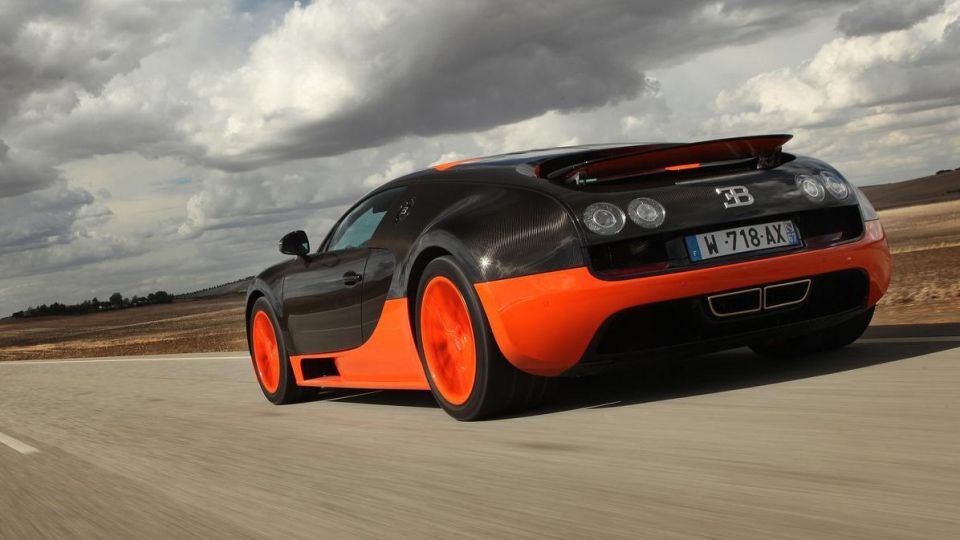
Not content with being second-best, Bugatti released the ultimate Veyron in the form of the Super Sport in 2010.
Packing even more grunt than the original, the Super Sport’s 8.0-litre quad-turbo W16 put out 882kW (1200hp) and 1500Nm, again sent to all four wheels via a seven-speed dual-clutch transmission. Zero to 100km/h was done in a claimed 2.5 seconds.
To achieve this, Bugatti used bigger turbos and bigger intercoolers, while a range of chassis modifications prepped the vehicle for better stability at higher speeds.
Production models were technically limited to 415km/h, but a derestricted pre-production unit achieved a two-way average of 431.072km/h in July 2010.
There was some controversy regarding this benchmark – namely opposition from Koenigsegg and Hennessey – as production vehicles were electronically limited, and therefore the figure achieved was not representative of a production vehicle.
Guinness World Records temporarily stripped the Super Sport of its title while it conducted a review, though ended up reinstating Bugatti as the record-holder and issued the following statement:
“The focus of the review was with respect to what may constitute a modification to a car’s standard specification. Having evaluated all the necessary information, Guinness World Records is now satisfied that a change to the speed limiter does not alter the fundamental design of the car or its engine.”
Bugatti offered the first five Super Sports in the same configuration as the record car, combining the eye-catching carbon-fibre/orange bodywork with matching orange wheels, and dumping the limiter.

Who would have thought a Lotus Exige on steroids would one day be the fastest car in the world.
American tuning house Hennessey Performance achieved exactly that, creating the bonkers Venom GT which stole the production car speed record from Bugatti in April 2013.
With a 6.2-litre twin-turbo V8 mounted in the back, the Hennessey Venom GT quotes manic outputs of 1200bhp (895kW) and 1566Nm, all sent to the rear axle via a six-speed manual transmission.
Weighing just 1220 kilograms, more than 600kg less than the standard Bugatti Veyron 16.4, the Venom GT had an insane power-to-weight ratio of 767hp (572kW) per tonne.
Hennessey claimed the Venom GT could accelerate from 0-60mph (0-97km/h) in 2.5 seconds, and 0-200mph (0-322km/h) in just 15.9 seconds.
The quoted top speed was 443km/h (275mph), though the verified record set by the Venom GT in April 2014 was 435.3km/h (270.49mph).
The record-breaking run was achieved at the Kennedy Space Center, Florida, on February 14, 2014 at the facility’s 3.2-mile (5.14km) space shuttle landing strip.
Company founder, John Hennessey, had previously contested Bugatti’s record with the Veyron Super Sport regarding the production model’s 415km/h speed limiter, so we imagine he was more than happy to finally top Bugatti for the speed record four years later.

A whole 12 years after it first made global headlines with the CCR, Koenigsegg reclaimed the title of world’s fastest production car with the Agera RS in 2017.
Choosing to make the record-breaking run on an 18km stretch of highway between Las Vegas and Pahrump on 4 November 2017, Koenigsegg achieved a verified two-way average of 447.19 km/h (277.87 mph).
On the same day it achieved several other records, including fastest 0-400-0km/h (33.29 seconds), fastest flying mile and flying kilometre on a public road, as well as the highest speed recorded on a public road (457.94 km/h/284.55 mph).
Power in the Agera RS comes from a 5.0-litre twin-turbo V8 generating 865kW and 1280Nm, sent to the rear wheels via a seven-speed paddle-shift sequential transmission.
Just 25 examples of the Koenigsegg Agera RS were produced.
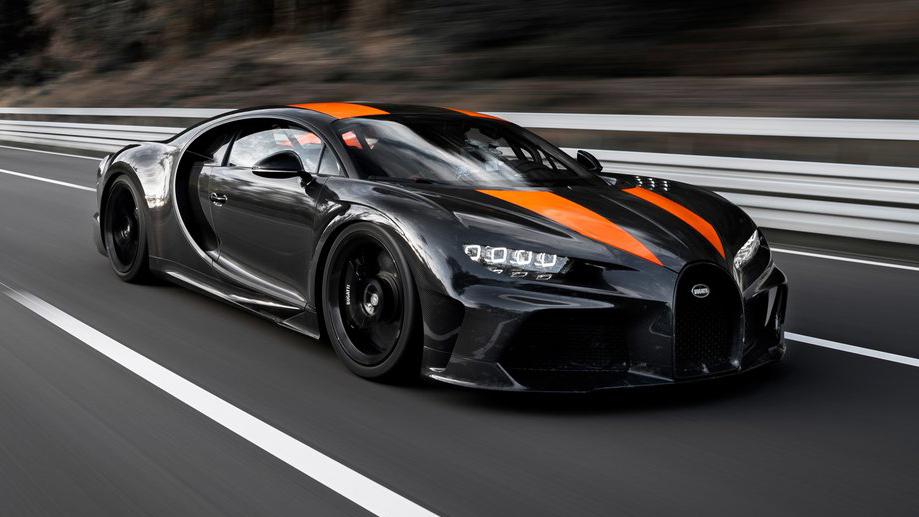
Where the Ferrari 288 GTO was the first production car to break the 300km/h barrier, it was the Bugatti Chiron Super Sport that broke the 300mph (483km/h) barrier in 2019.
The first run of Chirons were speed limited to 420km/h, meaning the first production models weren’t technically able to even better the previous Veyron Super Sport. However, two years after the initial model, Bugatti had another crack at the speed record with the Chiron Super Sport.
Like the Veyron Super Sport before it, the Chiron SS featured a number of changes in order to distinguish it from the ‘standard’ car as well as prepare it for such an unprecedented level of speed. The 8.0-litre quad-turbo W16 received an extra 100hp over the Chiron, rated at 1600hp (1176kW), while the vehicle’s body was extended and aerodynamically optimised for 420km/h+ speeds.
Bugatti’s ‘longtail’ treatment alone reduced ‘aerodynamic stall’ by 40 per cent, while other changes like revised air curtains, inlets and outlets at the front of the vehicle and around the wheels helped to reduce as much drag as possible.
On August 2, 2019, Andy Wallace piloted the Chiron Super Sport to its record 490.484 km/h (304.773 mph) top speed run at Volkswagen’s Ehra-Lessien test track in Germany.
Following the record-breaking achievement, the Super Sport 300 was made available to the public in a strictly-limited 30-unit production run, all finished in exposed carbon-fibre with Jet Orange accents – a similar colourway to the previous-generation Veyron Super Sport.
Like the Veyron did over a decade before it, the Chiron catapulted Bugatti into uncharted territory and once again set the performance benchmark for exotic hypercars.
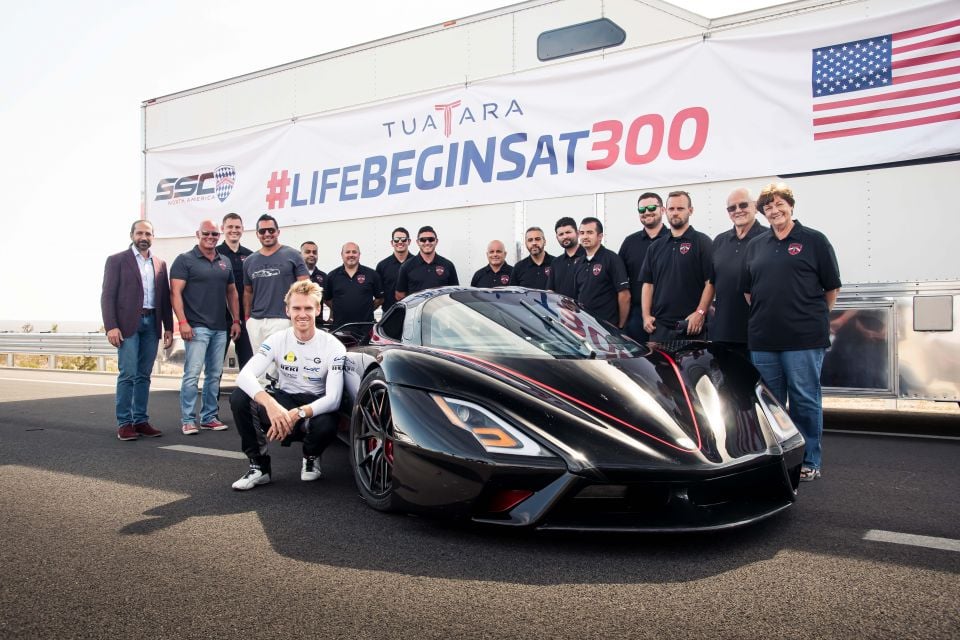
Fast forward to today, and there’s a new top-dog in the production car speed record stakes.
The new SSC Tuatara recently ran a verified two-way average top speed of 508.6km/h (316.03mph), though it managed to crack a warp-speed 532.6km/h on one of its two runs.
Powering the new ‘fastest production car in the world’ is a 5.9-litre twin-turbo V8 generating 1305kW of power on E85 fuel.
The record-breaking run was achieved on a closed stretch of highway in Nevada, USA, with World Endurance Championship driver Oliver Webb behind the wheel.
After setting the new benchmark, Webb claimed the Tuatara had “more in there”, with strong crosswinds preventing the new hypercar from reaching its full potential. Perhaps we’ll see another run in the future.
Which is your favourite world record holder? Let us know in the comments below
James Wong is an automotive journalist and former PR consultant, recognised among Australia’s most prolific motoring writers.


Max Davies
14 Hours Ago


William Stopford
14 Hours Ago


Derek Fung
14 Hours Ago


Max Davies
22 Hours Ago


William Stopford
2 Days Ago


Ben Zachariah
2 Days Ago